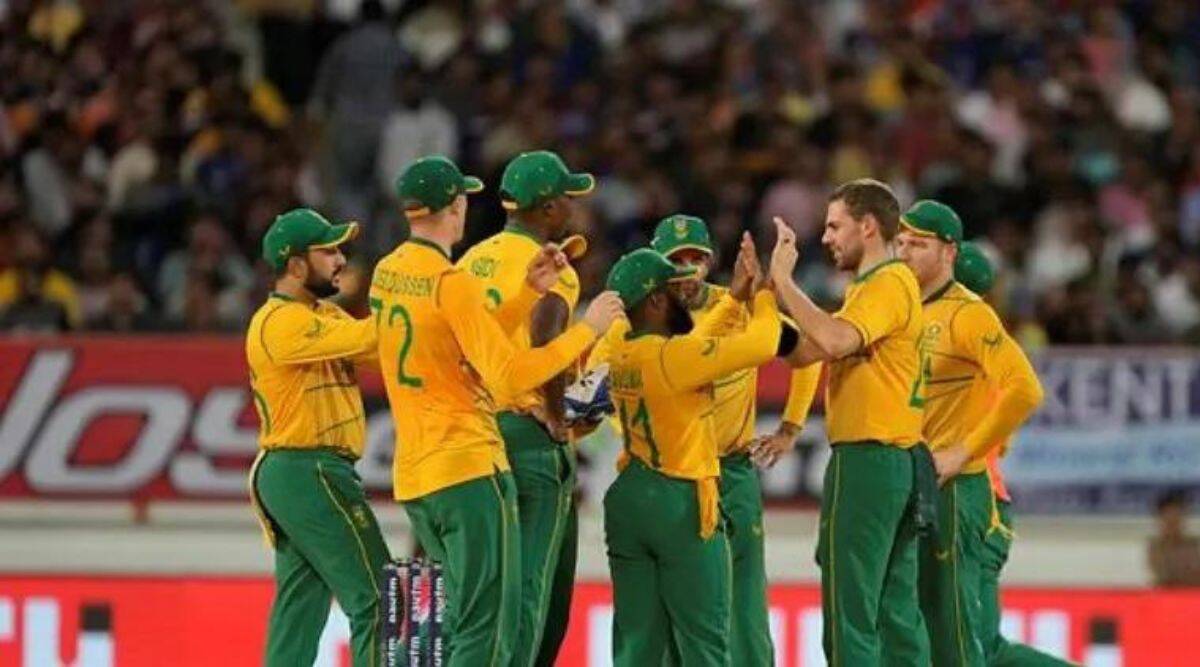With South Africa willing to put their direct qualification to the next year’s ODI world cup at risk by their withdrawal, the future of cricket’s monogamous relationship with T20 Franchise leagues is loud and clear.
Thank you for reading this post, don't forget to subscribe!Shared News: July 13, 2022 4:37:05 pm
South Africa have withdrwan from ODI series vs Australia scheduled for January 2023. (FILE)
The end of bilateral cricket series, especially in ODIs, is here. South Africa have withdrawn from their ODI series in Australia as it clashes with their new T20 franchise league. With the mushrooming T20 franchise leagues encroaching the already-packed international schedule, and with the backing and the interest of the money bags, this wasn’t a surprise. Still, South Africa’s withdrawal stands out for the risks entailed. They have put their direct qualification to the 50-over ODI world cup next year at risk by their withdrawal as they stand to lose valuable points.
The economics of cricket, we have been told for a while now, doesn’t support Test and “meaningless” bilateral series. Uday Shankar, the former chief of Star & Disney India, had once told this newspaper how there is no market for Test cricket and it’s only the largesse of the broadcasters that is running it.
Some small tweaks to the massive summer of international cricket ahead.
We still look forward to welcoming @OfficialCSA for a Test series kicking off at the Gabba on December 17 🙌 pic.twitter.com/xov2iuaucd
— Cricket Australia (@CricketAus) July 13, 2022
Not just Test cricket, but the bilateral ODI series is at risk. In fact, the schedule has already adjusted. There are fewer and fewer ODIs being played these days. But it appears more shuffling and re-arranging of the decks is on cards.
“Do we want to save cricket or no? You think if Kerry Packer didn’t do what he did, what would have happened to cricket. Do you need 13 Test matches in a year – 65 days! How many holidays you get? 20 days? Is that enough to watch all the Tests?” Shankar had told Media in 2017, just days after his network had coughed up16,000 crore to secure the media rights for the Indian Premier League between the years 2018 and 2022. Now, in its latest iteration, that figure has astronomically risen to 43,000 crores.

Uday Shankar, the former chief of Star & Disney India. (FILE)
“The economics do not drive the game. The popularity of the game drives the economics. Except for the summer Tests in England and a few in Australia, have you seen a full stadium? In today’s world, who do you expect to be available on TV or in the stadium to watch a match that goes on for five days? Our own data suggests, whether it’s T20, ODI or Test match, people spend one hour watching it. This is BARC data. Economics of Test cricket doesn’t work,” Shankar told this newspaper.
He also spoke about how the economics is purely driven by what the fans want. “The fans have spoken that they love the T20 format. It’s easy to misunderstand a broadcaster’s perspective because we seem to be the guys who are in it for the money, which is true. But you make money only when the fans like something.. This whole model of going and buying ever-more expensive cricket rights is not sustainable. Consumption of sports here is lowest in world. Until that changes, business of sports is going to be tough.”
An early indicator of Brand IPL growing despite the pandemic lull was the sale of two new teams earlier this year: BCCI earned a total of $1.7 billion, with the Lucknow franchise going for 250 per cent more than the base price.
The ICC tournaments would survive and the ICC has tried to give some importance to Tests by having a Test Championship. But it might not prove enough.
“Test cricket has a two-fold problem and that needs to be recognized. One, most of the Tests people find meaningless. Even today when India and Pakistan play or England and Australia play, people get excited about it because there’s a context. Most of Test cricket there’s no context. Second problem with Test cricket is that there’s too much of it. Last year in this country, India played 13 Tests at home. So 65 days of Test cricket in India, where data shows a person sees one out of 30 hours played during a Test,” Shankar said then.
“I don’t think Test cricket needs to be shut down. Staple has to be shorter format, and Test has to be fine-dining experience for special occasions. ICC have ODIs and T20, and they do well. The whole stature changes when there is an ICC tournament. If magically all the stadiums were to be full and everybody who loves cricket was watching Test cricket, we would kill each other to go and bid for the Test rights,” Shankar had said. His wish is now being granted.



